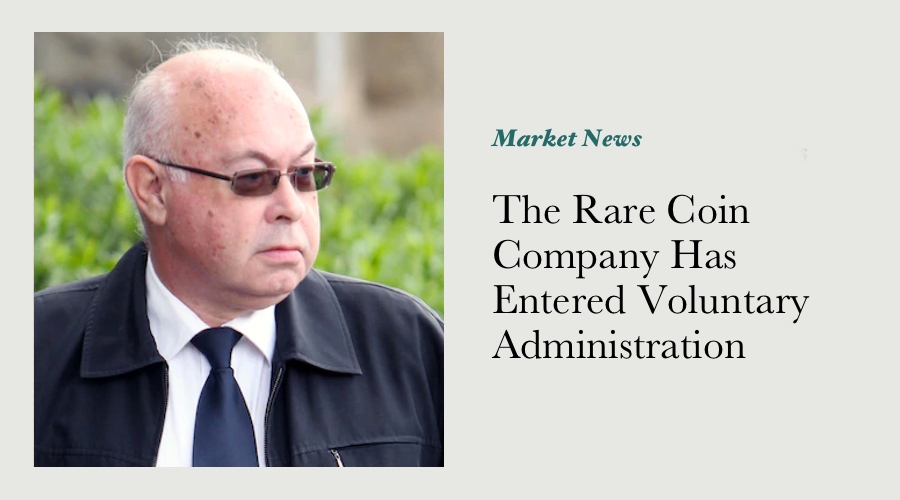The Rare Coin Company Has Entered Voluntary Administration

If you haven’t heard the news already, Albany (WA) based dealers in rare coins and banknotes, The Rare Coin Company, entered voluntary liquidation on Monday July 8th, 2013.
While there are numerous businesses around the country that go through this process each day of the week, the end of the Rare Coin Company is notable for the fact that it was known for being one of the more active dealers in the Australian numismatic market - some industry estimates set their annual turnover in the tens of millions of dollars for some time.
The Rare Coin Company was regularly in the mainstream media with publicity covering the sale of numerous historic rarities - just a few months ago they were mentioned in the AAP as handling the sale of a complete set of Collins Allen specimen notes dating to 1913 for the expected price of A$5.5 million.
While I believe it’s fair to say that the Rare Coin Company hadn’t been particularly active in the broader numismatic market via auctions and with other dealers for a number of years, their turnover was without doubt quite substantial relative to many other dealers in the market.
Normally, when one coin dealer goes out of business, whether through retirement, death or other factors, fellow dealers are able to either take up the slack or fill the void. Their clients move on, and the products they’ve sold continue to circulate throughout the numismatic market.
The business model of the Rare Coin Company however was quite unique in the Australian numismatic scene, indeed in the world. For a long while they are thought to have guaranteed minimum rates of return on the items that they sold, and are also thought to have guaranteed to immediately buy back items for cleared funds. These guarantees saw them attract customers far removed from the average coin show - people that bought through them were often simply regular mums and dads interested in putting some hard-earned capital to work as they headed towards retirement.
It is this business model however that may see the repercussions of the liquidation of the Rare Coin Company spread far more widely than has any similar event before in the history of the Australian numismatic market. These circumstances are unequivocally without precedent.
Collectors know that markets can run hot and that markets can be quiet. Collectors know that they can sometimes sell items from their collections for immediate hard cash, and non-collectors do not always appreciate that rare and historic coins or notes can take time to sell if the price isn’t right in the eyes of potential buyers.
As we are based in Perth, and as I am currently the President of the Australasian Numismatic Dealer’s Association (ANDA), I’ve been approached for public comment on this story several times already.
Prior to the administrator’s report being made available to the general public, I believe it’s quite premature to speculate in oublic over what led to the events of July 8th. Due to the gravity that this situation will have on everyone affected, I can fully appreciate that there is wide-ranging interest in each aspect of this story.
Several articles have already appeared in The West Australian newspaper (including a large on the front page of the 11/7 edition,) and there have been several reasonably in-depth discussions on ABC radio here in WA.
Our focus at the present moment is on providing accurate and transparent information regarding the authenticity, condition and market value of the numismatic items that they own. More broadly, I’ll be writing on the prudent steps that collectors of any stripe should do when they’re not certain of the value of the items that they have, or are not certain of the options that they have available to them.
The days ahead may well be uncertain for many people, however despite that, I still remain confident in the market for rare Australian coins and notes.
I believe it’s important to view this event in context - one dealer has entered voluntary liquidation, meaning they are can no longer act as a conduit back into the market for the items that their clients have for sale. These items will either be retained as collector’s items, or offered for sale through dealers and auctioneers in other parts of Australia.
If products purchased from the Rare Coin Company are in fact sold at prices that are a far lower than their acquisition cost, I expect this will be more a function of the prices that were paid, rather than as a result of any “flood” of rare coins and notes at fire sale prices that may or may not yet eventuate.
The market for Australian coins and notes continues to tick over, much of it blissfully unaware of events in the past week.
Turnover in the Australian numismatic market is estimated as being in the proximity of $400 million per year - there are also estimated to be more than 17,000 Australians who identify themselves as being “active” collectors of coins and notes.
The numismatic market outside Australia is as strong as it’s ever been - just this article alone describing how a single coin sold for more than US$3 million recently confirms this).
It’s widely agreed that the Rare Coin Company hadn’t been a force in the broader market for several years, and I’m confident that the current level of activity at our auctions and at our trade shows is reflective of this broader market, one that has been taking place without the Rare Coin Company playing any meaningful role at all in it.
While activity in certain segments of the market have been subdued, there are pockets of promising activity indeed.
Check for our review of the recent Downie auction, as well as the online auction conducted by Pacific Rim Auctions, for more information on recent sales of rare coins and notes.